Fish and Chips
Though John Lee's merchantile existence was largely as a result of buying and selling saltfish and freshwater fish, his wealth and fortune derived from his parents: Thomas Lee (1561-1620) of Coton, Salop, near Wolverhampton, and Dorothy Otley (1565-1636), daughter of Richard Otley of Petley. The family were well connected, their grandfather, also John Lee attended the court of Elizabeth I and was later knighted.
His brothers were Lancelot Lee (1594-1667) and Richard Lee (1619-1664). Lancelot inherited the family seat at Coton upon the death of his mother, whilst Richard Lee emigrated to Virginia in 1642, taking the post of Clerk of the Quarter Court. His Grandson Robert Henry Lee was one of the signatories on the American Declaration of Independence in 1776. (It's ironic to think that the Lees have a connection with Magna Carta and Runnymede some 550 years after the event!)
The Heiress of Ankerwycke
John Lee married Mary Pollard in 1637 and they resided in the Parish of St Michael, in Candlewick Ward, London. Records show they had at least 13 children. It is evident they lost 10 between 1639-1658. The three who survived to adulthood were:
George Lee (1637-1675)
John Lee (Jnr) (1638 - 1702)
Elizabeth Lee (1646-1713)
John Lee (Snr) was 50 when he bought Ankerwycke Purnish, and resided there until his death in 1682. When his son John inherited with his wife (Mary 1655-1725), he expanded the estate by purchasing land in Colnbrook and Langley, and later the Wraysbury Manor in 1685.
.
His younger sister, Elizabeth was not expected to inherit vast wealth, but because her brother died without issue in 1704, she became the Heiress of Ankerwycke.
Several decades previous, Elizabeth had married Sir Philip Harcourt on Christmas Eve 1674. He was formerly wed to Anne Waller, the daughter of Sir William Waller of Osterley Park and Anne Paget. Anne sadly died in 1664.
Sir Philip and Dame Elizabeth, as she became known, resided at Stanton Harcourt. They had 8 children, the eldest of whom was Philip Harcourt. Sir Philip died in 1683, but Dame Elizabeth outlived him by 30 years, dying in 1713. Their eldest son, also Philip, died in 1709, and his son also Philip assumed title and in 1725 he inherited all the Lee's estate upon the death of his great aunt, Mary Lee.

Extract from John Roques Map 1780 showing Ankerwykce (Anchor Wick).
The map is purely a representation of the landscape, but is somewhat useful in alluding to the presence of buildings and roads. The map shows two roads leading to Ankerwycke, and where they meet was known as Ankerwycke Gate, and is likely to be the site of the Medieval Gatehouse leading to the priory. Four buildings are discernible on the Island, but whilst two must represent the mansion and farm, the other two are less clear - maybe stables and dovecote?
Memorials in the Church at Stanton Harcourt, Oxfordshire
The marriage of Elizabeth to the Harcourts was a strong bond, and both John Lee (Snr), Mary Lee and their daughter Elizabeth are buried there.

Coat of Arms of the Worshipful Company of Fishmongers
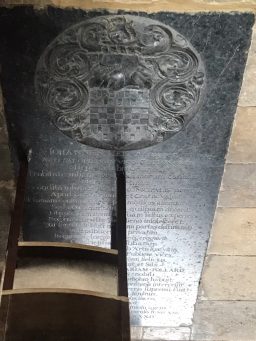
Grave of John Lee found at Stanton Harcourt, Oxfordshire

The elaborate grave and memorial to Sir Philip Harcourt and his wives Anne Waller and Elizabeth Lee at Stanton Harcourt, Oxfordshire
The Harcourts of Ankerwycke 1725 -1805
The Harcourts were a strong traditional family, with a Pedigree dating back a 1000 years. Their ancestors arriving with William of Normandy to England in 1066 . They were a wealthy, well connected family and through many marriages, royal privileges and duties were able to amass large estates. The family home in Oxfordshire was renamed Stanton Harcourt as a result of this wealth.
When Philip Harcourt, the grandson of Elizabeth Lee, inherited the Wraysbury and Ankerwycke Estates in 1725, it is unclear what changes to the fabric of the estate occurred. The family initially resided at the Priory, before moving up to Ankerwycke Purnish, and the lands and buildings at Ankerwycke Priory are leased (ref W Gyll p46):
1749 Mr Cornelius Townend was tenant
1765 George Barne became tenant
1763 Gilbert Jodrell tenant, paying £38 4sh 2d for "Great Ankerwycke and meadow".
After Gilbert's death, his widow, Ann remained at Ankerwycke until 1774
1774 - 1790 Various tenants mentioned: Sir Edwin Wynn Bart, then Thomas Bates Rous, Esq, Admiral Molyneux, Lord Shuldham,
.1790 -1799 Mr John Crickett Esq
It is not known what improvements, if any, were undertaken at Ankerwycke Priory. Most likely, the extravagent gardens were swept away, and perhaps too some parts of the Tudor mansion were pulled down. The Wraysbury Parish Overseers accounts record various entries of "losses at Ankerwycke" between 1744 and 1789, but it is unclear about the nature of these, as they could be agricultural. However, it is evidence that prior to 1800 Smith's mansion had been reduced in size, with the removal of the western range, and contemporary sketches of Ankerwycke Priory in the 1790s do not reflect such an impressive mansion.
Little Ankerwycke
In about 1730 however, Philip Harcourt does make improvements to Ankerwycke, including the construction of a smaller mansion, known in records as “Philip Harcourt’s new house” / “Squire Harcourt’s new house” and was called Little Ankerwycke in the rate books.
The location of Little Ankerwycke was located to the North of the Estate boundary of Ankerwycke Priory, near its medieval gatehouse. It was built on the land that was part of Wraysbury Manor, which was once a medieval common called Janes Green, and was likely where the poor would assemble for alms. It was enclosed by 1617.
The property was a modest size, with a small pleasure ground adjacent, and maps from 1800 allude to a simple rectangular plan. It is most unclear to what benefit building a mansion there? He already owned 3 mansion / Manors of Wraysbury, Ankerwycke Purnish and Ankerwycke, so why build a 4th? Whether he was planning something long term is hard to conjecture, however some years later his son-in-law Thomas Powell obtains a lease of the premises, and his son Harcourt Powell is admitted copyhold tenant in 1765. A notebook survives belonging to Harcourt Powell in which records household and kitchen accounts suggesting Powell was occupying Little Ankerwycke, however later in 1775 it records that the mansion is leased to William Hewitt Esq for £123 2sh in 1775. Subsequent tenants include the Widow of Gilbert Jodrell, Ann, who moves from Great Ankerwycke, and John Blagrove.
In 1799, as part of the Wraysbury Enclosure Award, Harcourt Powell's son John Powell exchanges the lands of Little Ankerwycke, Janes Green and Janes Meadow with John Simon Harcourt (the son of the deceased Philip Harcourt). Thus Little Ankerwycke becomes part of the Ankerwycke Estate, and the sitting tenant of the former, John Blagrove is keen to acquire it for his own means.
John Blagrove of Ankerwycke
John Blagrove was born in 1753 to Reading man, John Blagrove the elder. The family owned vast estates in Jamaica, which Blagrove inherited in 1756, when he was still a minor. This consisted of 929 slaves, and 5 estates: Cardiff Hall, Unity and Magotty appear to have been sugar estates, but Pembroke and Orange Valley may also have been involved in stock rearing and crop production. The net worth of his property was $78,854 Jamaican Dollars. Consequently these were put in trust until he was 21.
John spent his childhood and early adulthood in England and was educated at Eton and Oxford. In 1777, after a ‘Grand Tour’ of the continent, John married Anne Shakespear. and the couple left England to enable John to manage his Jamaican estates himself from his residence at Cardiff Hall. They remained in Jamaica for the remainder of the century, before moving to Wraysbury
Blagrove leased Little Ankerwycke from John Powell, and subsequently John Simon Harcourt. However, in 1804 Harcourt was keen to sell the estate.
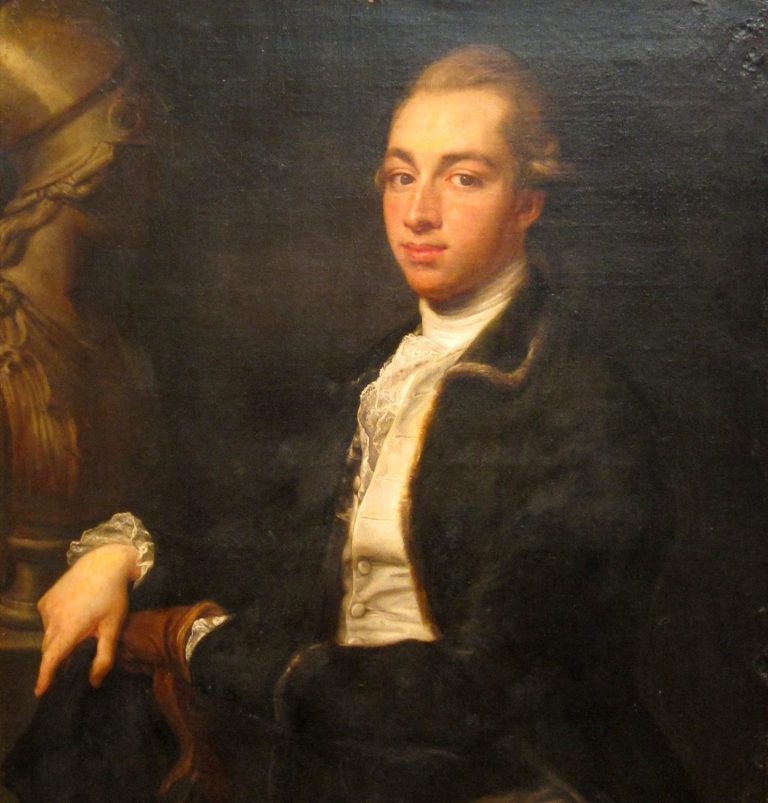
Portrait of John Blagrove, 1779 by Pompeo Batoni (1708 - 1787)
National Gallery of Jamaica Collection
Blagrove makes his move
In August 1804 Simon Harcourt elected to sell the Manor of Wraysbury, then including Ankerwycke up for auction. The auction was to take place at Garraway's Coffee-House, Change-Alley, Cornhill, London. The property was divided into lots, with Ankerwycke House, The Homestead and Little Ankerwycke, comprising 24 acres forming Lot 1, Timber on the estate, Lot 2, The George Public House, and Ankerwycke lands and property comprising the other lots.
John Blagrove was successful in bidding for Lot 1 for £2952, and then quickly approached John Simon Harcourt with intentions to purchase the remainder of the lots. With a swift handshake a gentleman's agreement was struck and Blagrove bought the remainder of the Estate for a further £2416.

Blagrove's mansion as it appears in 1948

Enclosure Map 1800
The image shows Wraysbury's Enclosure Map. Smith's mansion (Great Ankerwycke) can be seen to the south. Above it are the medieval priory barns. Leading NE is the causeway up to Ankerwycke Gate, where the 1730 property of Little Ankerwycke was built

Ankerwycke House 1790
The sketch above was undertaken by Dominic Serres (1722-93). His work was more usually of a naval theme, so this rare sketch in the latter years of his life shows Ankerwycke as a simple house, rather than great mansion.

Ankerwycke House 1790
This image is taken from a commemorative souvenir for Egham Races. It was produced on a handkerchief and here I have mde it into a colour graphic. It shows a more imposing property, with ornamental gardens, but with a larger building to the east, which does not fit with known plans/
Changes to the landscape 1800-1825

1800 Map
The estate of Ankerwycke prior to acquisition by Blagrove comprised many elements from both the medieval landscape and subsequent Tudor house. Smith's mansion still was present, with the large barns and farm adjacent. Many of the fields had remained unaltered from the 16th century, and a small collection of houses still were located near Ankerwycke Gate, where Little Ankerwycke was sited.
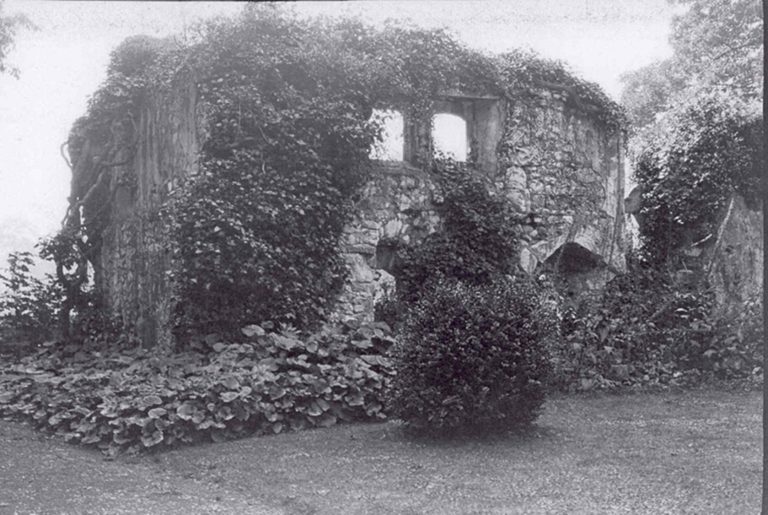
Smith's mansion was reduced to a series of walls to create a folly. Whilst some of the windows were historic, some elements were altered to create fake archways and doorways

In 1824, following the death of John Blagrove the 480 acre estate of Ankerwycke, including two farms was offered for lease. However George Simon Harcourt, son of Simon Harcourt (d1810), made a successful offer in 1829 to purchase the estate.

1840 Map
Blagrove's changes are vast and sweeping:
He rebuilds Little Ankerwycke into a 'commodious' mansion. Next he creates two wooded parklands to the east and west of his house. Smith's mansion is partially dismantled, leaving a few sections of wall as a folly. Lastly he removes the medieval barns and farm, rebuilding a 'model farm further to the north. Lastly he creates a pleasure ground by the river.
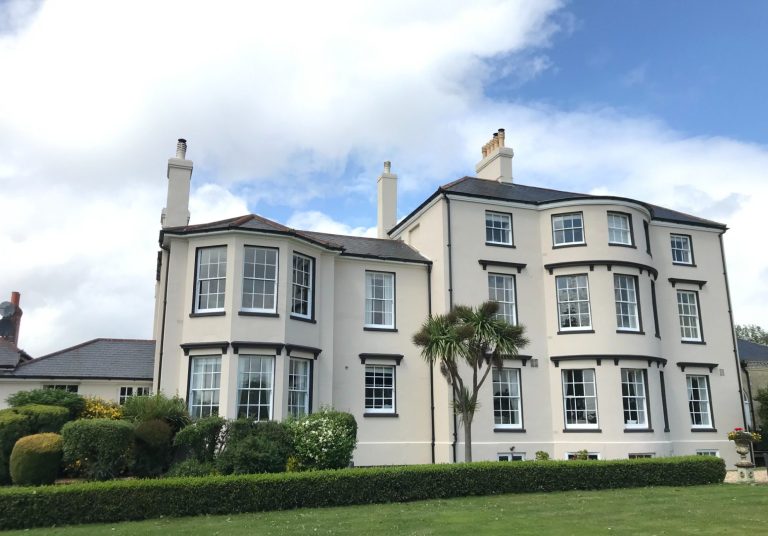
Blagrove purchased a second home at Great Abshott, near Titchfield, Hampshire. It is here where he died, childless in 1824. In his will, he bequeathed £1 dollar to each of his former slaves, in recognition of the fact that his wealth was wrongly derived from their exploitation.

John Blagrove's tomb lies in the graveyard of Great Abshott church. He was 70 years old.
The Harcourts return to Ankerwycke
In 1829 George Simon Harcourt repurchases the greatly improved Ankerwycke Estate that his father had sold in 1805. It is unclear whether his family move to Wraysbury, or continue to reside at Ankerwycke Purnish on Coopers Hill.
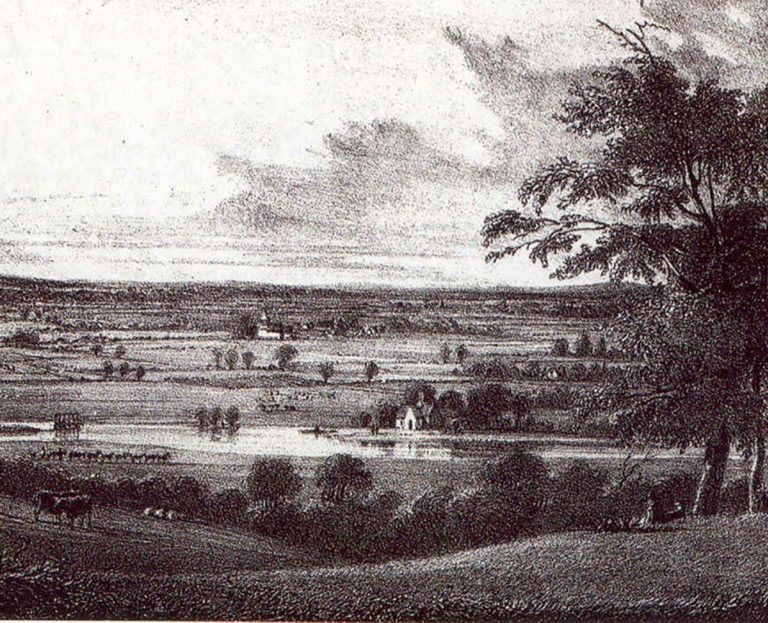
Harcourt's Magna Carta Island
George Simon Harcourt resided in Ankerwycke Purnish (Coopers Hill) when he purchased the Estate of Ankerwycke Priory from Blagrove's executors. His view from the hill at the time was of a small fishing cottage (right) on the Island.
However he took the opportunity to redevelop the site into an impressive Folly, and charge visitors 1d to cross by ferry to the house where he claimed Magna Carta was sealed. A hexagon table, was engraved with an inscription citing the historic event.

The former fisherman's cottage on the Island
The Island was originally called Ferry Eyot and was site of the Ankerwycke Ferry, which enabled animals and people to cross the Thames. The ferry originally enabled the nuns to access Purnish, where their pigs would pannage and timber harvested for building and cooking.
The Island later had osiers (willow) growing on it for basket making, and the fisherman's cottage was built sometime in the 1600s.

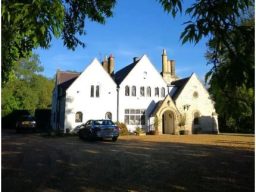
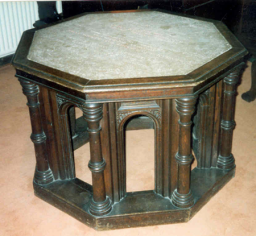

The Charter Room
The Charter Room inside Magna Carta Cottage commemorates the 25 barons who met King John to persuade him to set his seal on the 1215 Charter.
Engraved on the top it reads:
Be it remembered that on this island, 25th June 1215, King John of England signed Magna Charta; and in the year 1834 this building was erected in commemoration of that great and important event by George Simon Harcourt Esq, Lord of the Manor [of Wraysbury] and then High Sherriff of the County.
Previous Page : Stuart History Next Page: Recent History
© Copyright. All rights reserved.
We need your consent to load the translations
We use a third-party service to translate the website content that may collect data about your activity. Please review the details in the privacy policy and accept the service to view the translations.
